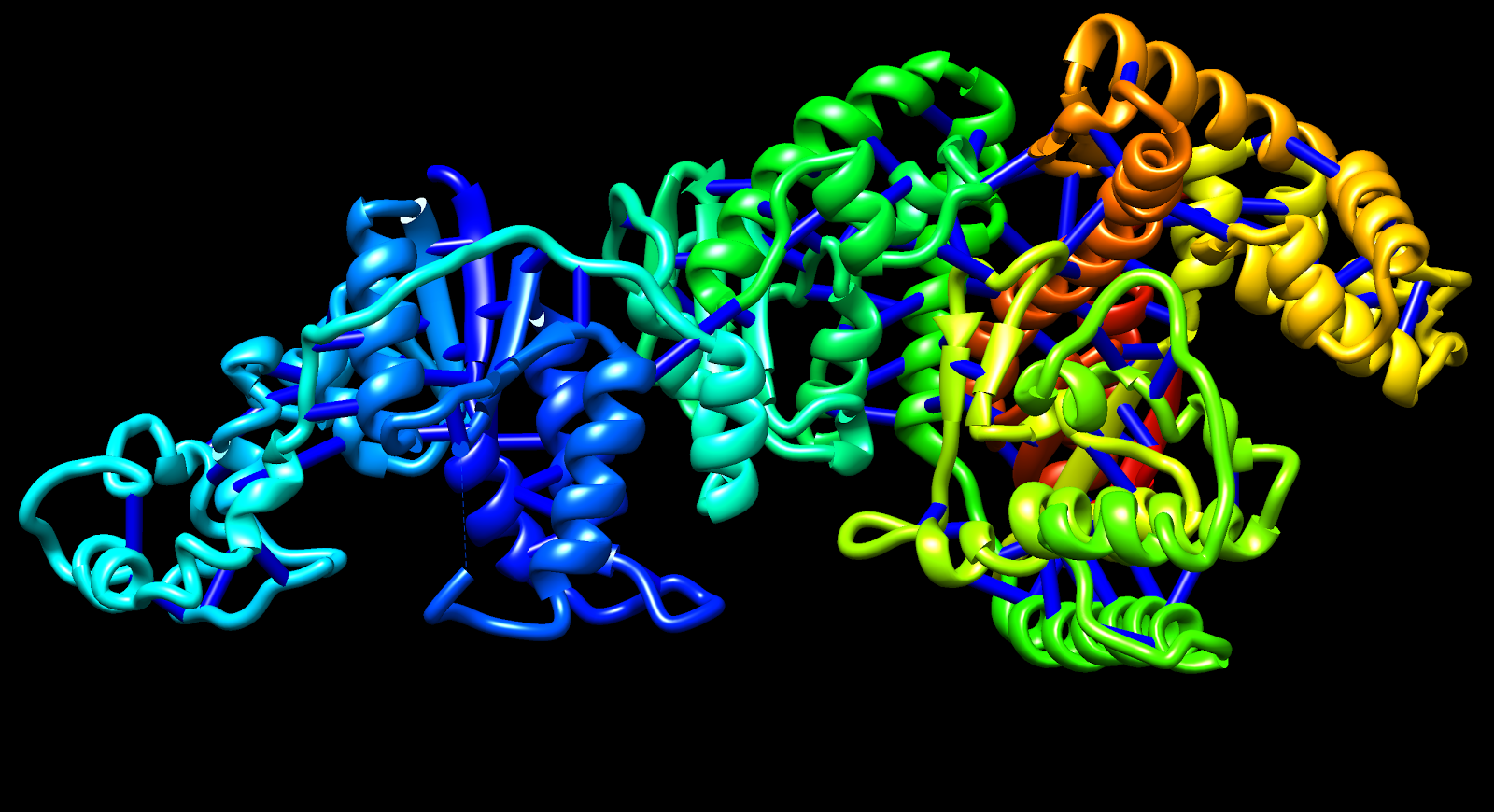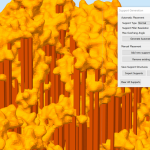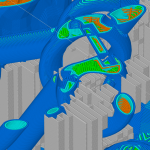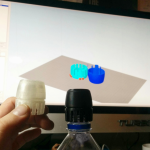How 3D Printing is Helping to Advance Scientific Research
3D printing has been a catalyst for advances in medicine, such as with prosthetics (E-nable project) and pre-surgery models used for planning operations. Increasingly, 3D printing is being used as a scientific catalyst, offering new opportunities to view and understand complex scientific concepts We recently talked with two enthusiastic researchers about their new-found ability to 3D print complex molecular structures.
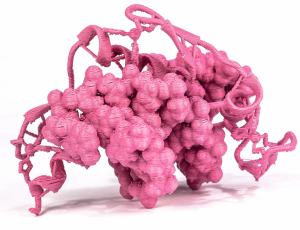 At the Brandeis University MakerLab, Eduardo Beltrame has been on the forefront of teaching students and educators how to print these complex models on desktop printers. Imagine helixes, oblique angles, large overhangs and intricate crevices. Yet when faced with a 3D printing challenge, Eduardo seems to embody the philosophy of “where there’s a will, there’s a way”. Eduardo assists Biochemistry students by teaching them his process, and has published his complete instructions online that contain valuable instruction for anyone interested in printing complex scientific models.
At the Brandeis University MakerLab, Eduardo Beltrame has been on the forefront of teaching students and educators how to print these complex models on desktop printers. Imagine helixes, oblique angles, large overhangs and intricate crevices. Yet when faced with a 3D printing challenge, Eduardo seems to embody the philosophy of “where there’s a will, there’s a way”. Eduardo assists Biochemistry students by teaching them his process, and has published his complete instructions online that contain valuable instruction for anyone interested in printing complex scientific models.
Model manipulation in Chimera software
Eduardo shares the secrets of his workflow. He uses a blend of molecular visualization software such as UCSF Chimera for model manipulation and rendering, and programs like Netfabb to repair mesh and ensure printability.
Finally, Eduardo imports his models into Simplify3D, which he has found to be invaluable for several reasons. First, the huge files are sliced with relative ease whereas Eduardo previously hit roadblocks trying other slicing solutions. In addition, he depends on the support structures generated by Simplify3D to achieve high-quality models. To locate the supports properly, Eduardo starts with automatic support placement but then shifts to manual support editing to customize supports to fit the exact contours of the specific molecule. Finally, Eduardo spends a significant amount of time reviewing his models in the Preview Mode of Simplify3D. Using the ability to preview the exact toolpath of the printer, he fine tunes his print for maximum success and quality.
We don’t want to imply that this is a quick process. In fact, on the path to learning, Eduardo and his students are generating a boat-load of molecules, some successful and some not-so-much, but along the way, they are also generating a boat load of enthusiasm for scientific discovery. Kudos to them!
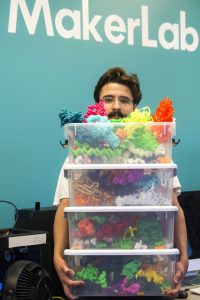 While talking to Eduardo about his process, he introduced us to colleague experimenting with similar molecular models. James Tyrwhitt-Drake is another researcher on the forefront of 3D printed molecular models. James works with the U.S National Institutes of Health (NIH) at the NIH 3D Print Exchange, which is like Thingiverse for the life sciences – a community-driven portal that provides bioscientific and medical models for 3D printing. The 3D Print Exchange can automatically generate 3D models of more than 6 million molecules in scientific databases.
While talking to Eduardo about his process, he introduced us to colleague experimenting with similar molecular models. James Tyrwhitt-Drake is another researcher on the forefront of 3D printed molecular models. James works with the U.S National Institutes of Health (NIH) at the NIH 3D Print Exchange, which is like Thingiverse for the life sciences – a community-driven portal that provides bioscientific and medical models for 3D printing. The 3D Print Exchange can automatically generate 3D models of more than 6 million molecules in scientific databases.
James recently sent us photos of a print that caused all of us to take a second look. While anyone who studied science may have seen a drawing of a molecule, it is fascinating to see a lifelike molecule that you can hold in your hand!
The challenge he faced was printing a flexible model of an HIV protein, the ENV trimer along with and antibodies binding to it. The model was requested by a researcher at NIH who solved the 3D structure of the protein. ENV is present on the surface of HIV and helps the virus enter human cells. The model needed to be printed in flexible material in order to determine how the antibodies bind to the protein. The Flexible material mimics the flexibility of the protein and allows researchers to get a better grasp on how these different structures come together.
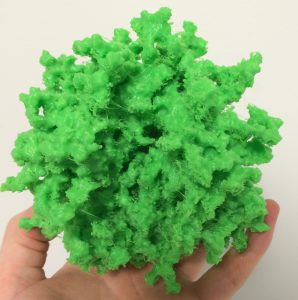 In order to accomplish this, James managed to print all of these elements out of NinjaFlex material. Many printing experts have been challenged to achieve high-quality results with flexible materials, but James managed to print one of the most complex models we have ever seen, including complex support structures, completely in the flexible material!
In order to accomplish this, James managed to print all of these elements out of NinjaFlex material. Many printing experts have been challenged to achieve high-quality results with flexible materials, but James managed to print one of the most complex models we have ever seen, including complex support structures, completely in the flexible material!
According to James, removing the supports and cleaning up the model was a bit of a challenge, but the end result allows researchers to study protein molecules with a new perspective.
Want to try your hand at printing some of these molecular models? Check out the NIH 3D Print exchange for tips and printable models, as well as Eduardo’s Guide for 3D Printing Proteins if you want to join them on the road to scientific discovery!

